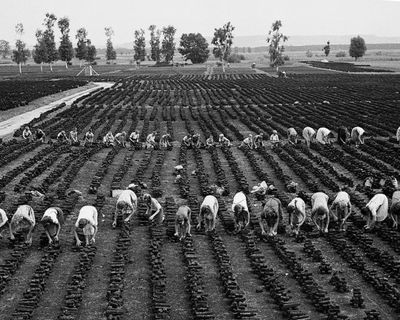STUDIO ETH Zürich
Spring 2022
AtlasWetlands & AgricultureMichael Fingleton and Evangelia Kiosse

Turning and drying harvested peat briquettes on the Berner Seeland former wetlands to be used as coal replacement, 1942. Source: Staatsarchiv Aargau/Ringier Bildarchiv.
Our history of the last centuries shows us how man and agriculture has conquered the wetland, eviscerating it and its non-human biodiversity from the landscape for means of expanded and intensified human consumption. Gone the damp squalid air and diseases it carried, gone the useless, fruitless terrain, gone the flooding of low lying plains. In its stead new fields of crops, new pasturelands, new buildings in new towns, new banks and barriers to spreading waters. Man and Agriculture before Wetland and Nature.
Our recent past tells us that story changes. Wetlands before Agriculture. Biodiversity before profit. Life before death. Our wetlands are grasping the last of their straw, just as we begin to rediscover their importance. For life across the planet.
Wetlands before Agriculture?
In this chapter of the atlas, divided into four sections we look at the historical development of wetlands from the formation of the modern Swiss state to the modern day, and the role they might play into the future.
The first section concerns the formation and disappearance of wetlands and its causes. Soils and waters are examined in the second section, ploughing into the nutritional capacities of both. The penultimate section looks at the various protection states of the wetland landscapes and habitats, and finally we examine possible future scenarios.
Wetlands and Agriculture